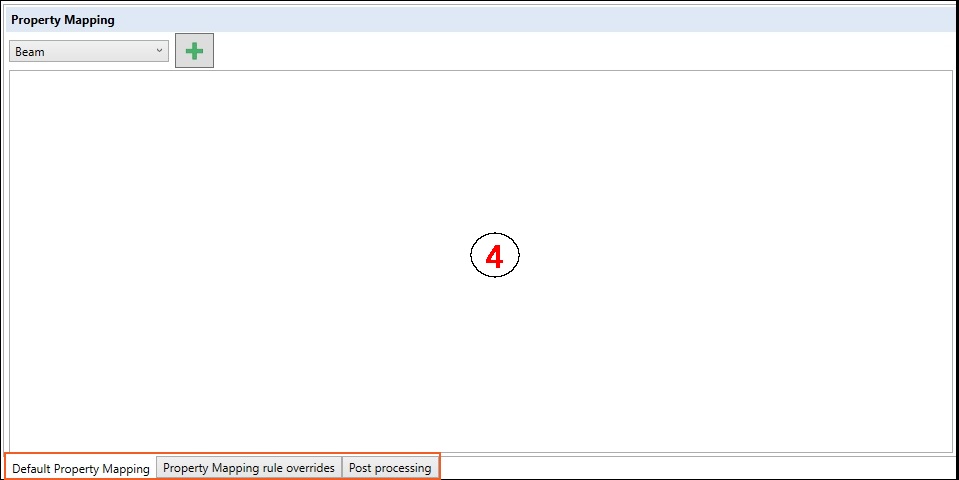hsbExport | IFC Import Manager (Video)
Say goodbye to time-consuming processes and compatibility issues.
Our intuitive IFC Import Manager makes categorizing and converting items a breeze.
BLOCK_CHECK_START
This article provides an overview of the new IFC Import Manager, exploring its various component area's and functionalities.
BLOCK__END
BLOCK_WARNING_START
This new Ifc Import Manager is available from hsbDesign26 for AutoCAD® Architecture
BLOCK__END
Startup
To open the Ifc Import Manager in AutoCAD® Architecture type in the command hsb_importifc, select an IFC file
A new window will appears.
You are now requested to select an IFC file to open.
After loading the file the following window appears:
BLOCK_INFO_START
Note that when you open a large IFC model, it could take a while before the model is processed. Currently it is not showing a progress bar, but be patient when it seems nothing is happening.
BLOCK__END

This window consists of 4 distinct areas dedicated to simplifying your IFC file.
1. Model viewer area
Zoom in to examine intricate details or zoom out for a broader perspective of your entire IFC model. Effortlessly orbit (right mouse click) around your design, allowing you to view it from every angle, ensuring a comprehensive understanding of what you want to import.
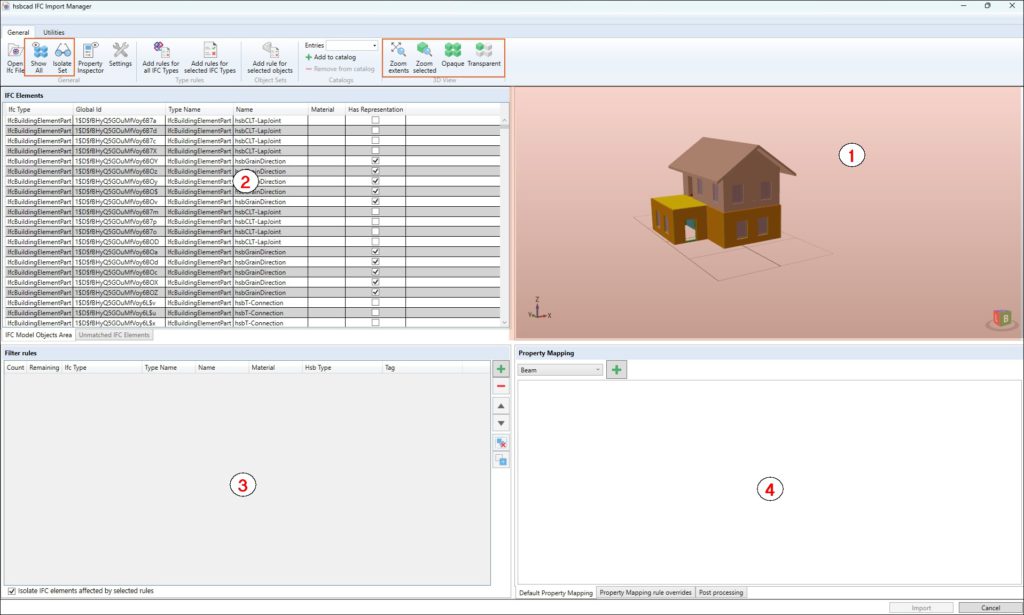
There are different buttons in the ribbon which have effect on the modelviewer.
Isolate Set, makes them look transparent or zoom to a selected object.
The modelviewer and these action are interactively connected to the other area's, 2. IFC Elements list area and 3. Filter rules area.
BLOCK_INFO_START
Properties Inspector
When you are missing information regarding the items in the IFC Model viewer, you can add the Properties window.
When you select the Properties Inspector in the ribbon a window will pop up, you are able to dock this window on a location which makes the most sense to you.
Hover over one of the 4 area's and use the arrows to dock the Properties dialog box it.
BLOCK__END

BLOCK_INFO_START
In this example below, it is docked in the 1. IFC Model viewer area.
BLOCK__END
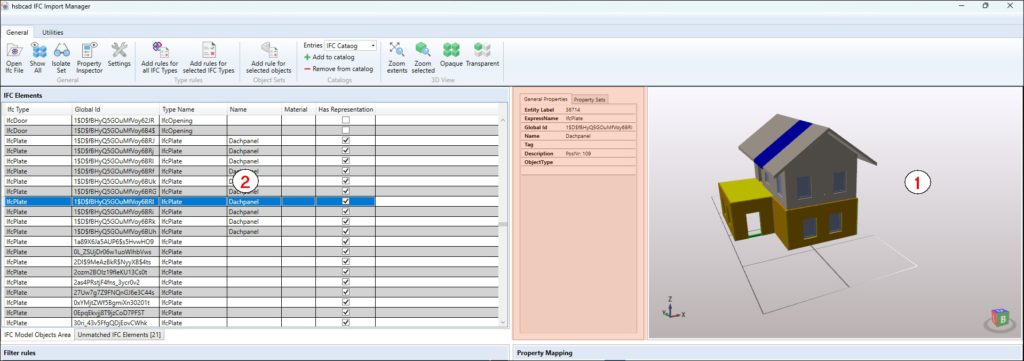
BLOCK_INFO_START
As you can see, when selecting an item in the 1. IFC Model viewer it highlights in the 2. IFC Elements list.
BLOCK__END
2. IFC Elements list area
No more searching through complex structures or struggling to locate specific elements.
The IFC Elements List simplifies the process, giving you a clear and concise list of the elements/items within your model.
Each item in the list is accompanied by essential details, including the Global ID, Type name, Name, and Material, ensuring a complete understanding of the model's properties.
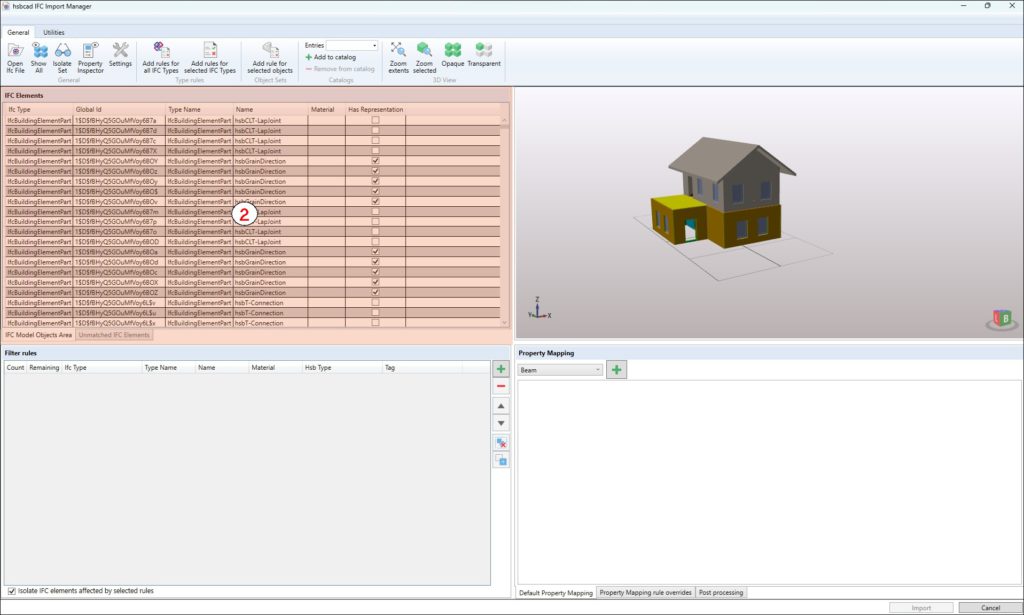
BLOCK_INFO_START
You can also see a checkmark behind the different items in the list.
This is the Has Representation column.
Here you can see if there are items which are in the model, but visually cannot be resolved/represented.
This could have multiple reasons but in most cases it is because it is not correctly exported to the IFC Model from the source software.
BLOCK__END
3. Filter rules area
Creating filters in an instance.
Easily filter from the IFC Elements list area and save your filters in a catalog to be reused when importing an other model.
BLOCK_INFO_START
The Catalogs are saved in your hsbCompany'\ifcImport, this is automatically activated when you launch the command hsb_importifc for the first time.
BLOCK__END
You can create filters based on selection, or with a click of a button based on type.
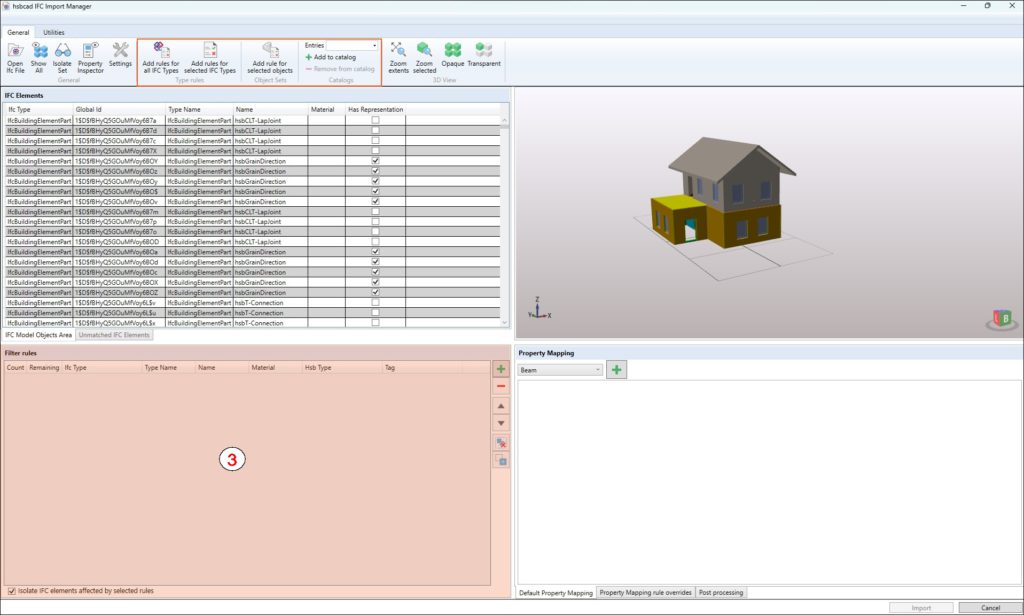
Create rules for all IFC Types
Instantly create rules for all of the different IFC Types by selecting the following button:

Create rules for the selected IFC Types
If you only want to filter specific IFC Types, you can create rules for the different types which are selected by selecting the following button:

Create a custom rule based on selection
When selecting one or multiple elements/items in the modelviewer, or selecting an item in the list you can create a rule which filters those items. This can be done easily selecting the following button:

Save your rules in a catalog
When you have created your rules, you are able to easily save them in a catalog to be used again next time. Selecting the following button Add to catalog will request you to give it a name for the catalog.

Move, add and delete rules
When rules are created, using the following buttons you have the ability to:
- Add more rules
- Delete rules
- Move rules up- or down
- Delete all rules
- Copy/duplicate rules

All of these buttons have effect on the rules which are selected.
4. Property Mapping and post processing
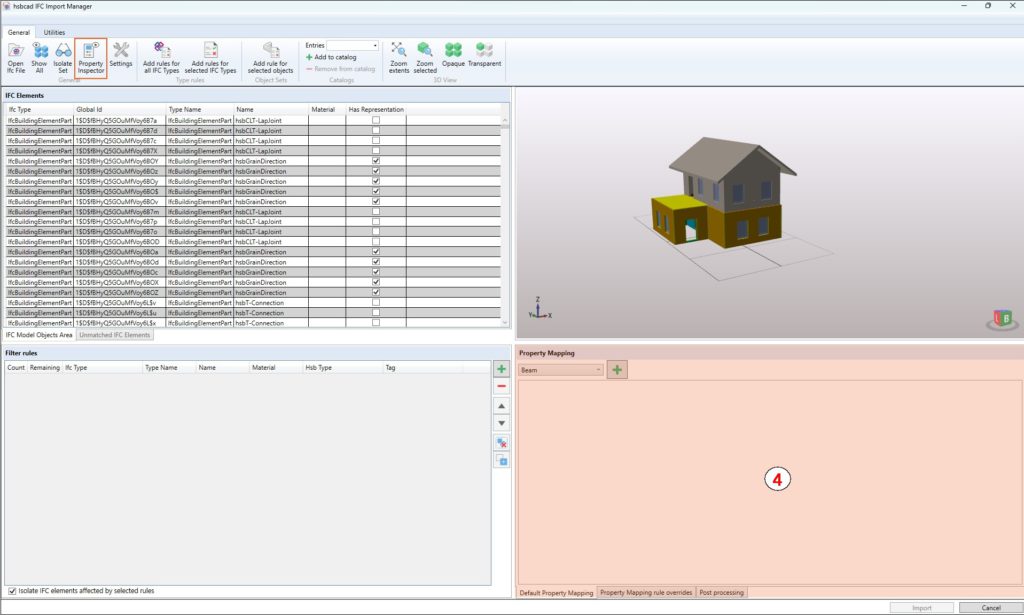
For each of the filter rules there is a default mapping applied.
This is based on the selection of the Hsb Type in the filter rule.
Normally this imports the items and adds the data as extended data in AutoCad Architecture.

You can change the Default property mapping, but you can also override the property mapping by creating your own property mapping. This can be done by selecting the option at the bottom on the tab Property Mapping rule overrides
Also you have the possibility to set up your own Post processing.
Here you can set up the Extensions, the Validations and Alias Manager during the import.
